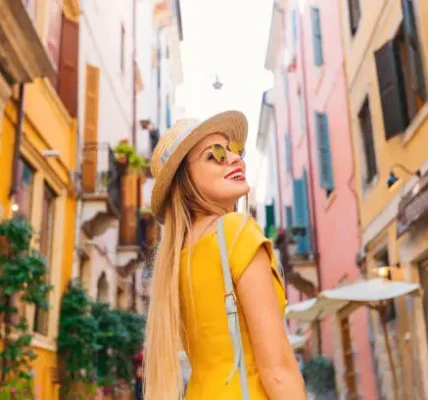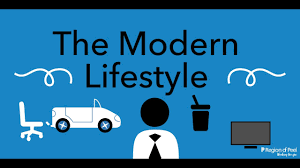The 1920s was a transformative era, marked by societal shifts, cultural revolutions, and an undeniable flair for fashion. Known as the “Roaring Twenties,” this decade was defined by its exuberance, hedonism, and modernity. For men, the 1920s was a time of sartorial sophistication, as the rigid formal wear of the Victorian and Edwardian eras gave way to more relaxed, yet still polished, looks. The fashion trends of the 1920s for men were greatly influenced by the spirit of the times—an era where jazz music, flappers, and a growing middle class led to the emergence of bold and exciting new styles.
This decade witnessed the birth of the modern man’s wardrobe, with iconic looks that continue to inspire contemporary fashion today. From the elegant suits worn by Hollywood stars to the casual sportswear of the everyday man, the 1920s laid the foundation for the modern approach to dressing with style and comfort. Let’s take a deep dive into the fashion trends that defined men’s style during the Roaring Twenties.
1. The Evolution of the Suit
The 1920s were a pivotal moment for men’s suits, as they underwent a significant evolution that marked the beginning of the modern cut. Before this period, men’s clothing was typically more rigid, with stiff collars, tailored coats, and overly formal silhouettes. However, by the 1920s, the suit had taken on a more streamlined, comfortable, and stylish look, reflecting the energetic and optimistic spirit of the time.
The Morning Suit and Lounge Suit
The most popular choice for men during the 1920s was the lounge suit, a more relaxed yet elegant option that replaced the formal morning coat. This suit featured a single-breasted jacket with narrower lapels, often in dark or muted colors like charcoal gray, navy blue, or brown. For the wealthier elite, the morning suit was still in use, particularly for formal occasions such as weddings or upscale daytime events. It was distinguished by its long tail and a double-breasted front.
The Double-Breasted Suit
The double-breasted suit, with its two rows of buttons, became a signature look of the period, especially for men in high society. This style was often paired with high-waisted trousers, creating an elongating effect. It was tailored in such a way that it emphasized a man’s physique while maintaining a refined and structured look. This trend was popularized by the upper echelons of society, such as movie stars, and it soon trickled down to the everyday man. The double-breasted jacket had sharp, angular shoulders, which enhanced the overall clean-cut aesthetic.
2. The Rise of the Tuxedo
No piece of clothing exemplifies the sophistication of the 1920s more than the tuxedo. The tuxedo, which had originated earlier in the 19th century as an alternative to the tailcoat, reached its zenith in the 1920s as a symbol of class and refinement. It became the go-to garment for evening events, especially for formal dinners, gala events, and upscale gatherings. The tuxedo was an essential part of a man’s wardrobe during this period and was closely associated with the glamour of Hollywood and the jazz age.
Tuxedo Details
The typical 1920s tuxedo featured a black jacket with satin or grosgrain lapels and a white dress shirt with a pleated front. The trousers were often made of wool, and the look was completed with a black bow tie, black patent leather shoes, and a formal white pocket square. Men of wealth and status frequently accessorized their tuxedos with cummerbunds or waistcoats, adding further layers of sophistication to the ensemble.
For the first time, the tuxedo became an accessible piece for the general population, thanks to mass production. This democratization of fashion allowed even men of modest means to own a tuxedo and wear it to the increasing number of formal social events during the Jazz Age.
3. Casual and Sportswear: The Birth of the Modern Man’s Wardrobe
While the tuxedo and suits remained important, the 1920s was also a time when men’s fashion began to embrace more casual styles. This era saw the birth of what we now recognize as modern sportswear—functional, comfortable clothing designed for recreation and leisure.
The Advent of Sports Jackets
As the popularity of outdoor sports grew, particularly tennis, golf, and sailing, men’s clothing adapted accordingly. The sports jacket, often made of lightweight tweed or flannel, became a staple of men’s wardrobes. These jackets were typically paired with plus-fours (baggy knickers) or corduroy trousers, ideal for outdoor activities. The look was often accessorized with a flat cap, which further defined the sporting aesthetic.
The rise of the automobile also influenced casual attire, as driving became a popular leisure activity. Men adopted more relaxed yet stylish outfits suited for road trips and outdoor adventures, leading to the creation of stylish driving gloves and waist-length jackets.
4. The Accessories of the Roaring Twenties
Accessories were a critical part of men’s fashion during the 1920s. These small but significant additions to an outfit made all the difference in terms of personal style, and many became iconic symbols of the decade.
The Bow Tie and Neck Tie
Bow ties, though not as prevalent as neckties, became closely associated with men’s formal wear in the 1920s. The necktie, however, was the more popular choice, with a broad array of styles becoming available to men. Ties were often made of silk, in striped or solid colors, and were worn with high-collared shirts. The windsor knot, popularized by the Duke of Windsor, became a symbol of class and sophistication, with many men following his lead in mastering this neat and symmetrical style.
Pocket Watches
Pocket watches were also essential for a gentleman’s attire. A luxury item during this period, the pocket watch was often carried in a waistcoat pocket and attached with a chain, adding a dash of old-world charm to a suit or tuxedo. In addition to being a practical item, the pocket watch was also an important status symbol, with expensive timepieces signifying wealth and sophistication.
Hats: Fedoras and Trilbies
Hats were a quintessential part of 1920s fashion for men. The fedora was the most popular hat style, often made from felt and featuring a soft, wide brim. It was worn tilted at an angle to add an air of mystery and elegance. The trilby, a similar hat with a narrower brim, also gained prominence during this period. Both hats were often paired with a tailored suit or sport jacket, serving as the finishing touch to a refined outfit.
5. Footwear: Oxfords and Brogues
Shoes were another crucial aspect of 1920s men’s fashion. Oxford shoes, particularly in black leather, were the standard for formal occasions. These shoes were sleek and polished, perfect for pairing with suits or tuxedos. Meanwhile, for casual wear, brogues—leather shoes with decorative perforations—became popular, especially for outdoor activities like golf and tennis. The style was a nod to the British aristocracy and added an air of sophistication to any casual look.
6. Haircuts and Grooming
In terms of grooming, men in the 1920s took great care with their appearance. A well-groomed face and head were essential for the fashionable man. The classic side part hairstyle was ubiquitous, with many men opting for shorter cuts and neatly combed hair. Some men wore their hair slicked back with pomade, creating the signature shine that was associated with 1920s glamour.
Beards and mustaches were less popular than in previous decades, but some men, particularly those in artistic or intellectual circles, retained facial hair in the form of the moustache or goatee. The clean-shaven look, however, was generally the dominant trend of the era, as it symbolized sophistication and modernity.
Conclusion: The Legacy of 1920s Men’s Fashion
The fashion of the 1920s for men was bold, innovative, and timeless. It represented a departure from the stuffy, formal clothing of the previous century, embracing comfort, elegance, and the spirit of the Jazz Age. From the rise of the tuxedo to the introduction of modern sportswear and casual chic, men’s fashion in the 1920s was a reflection of the modern world—energetic, rebellious, and full of promise. Today, these classic looks continue to influence menswear, reminding us that the 1920s was truly a decade where fashion and culture roared in unison.




